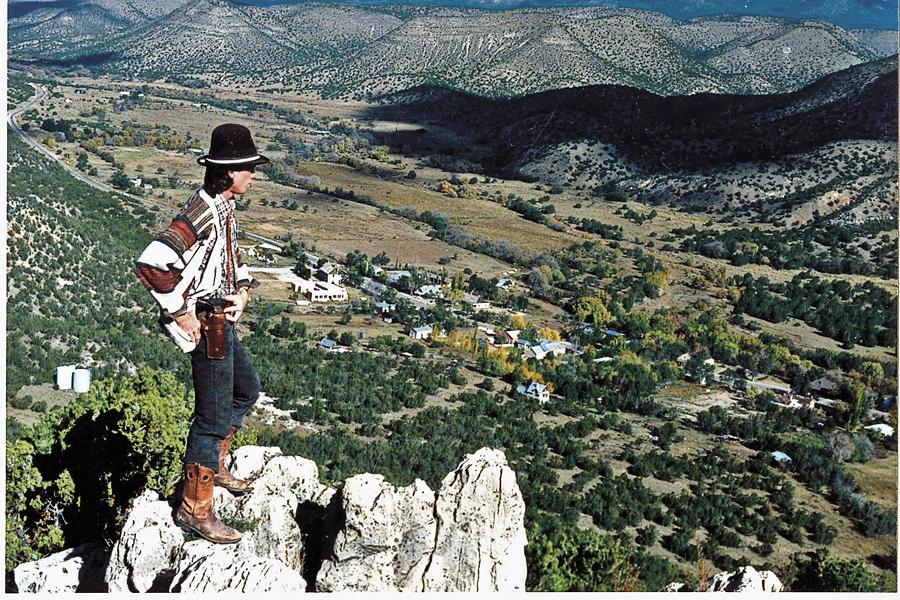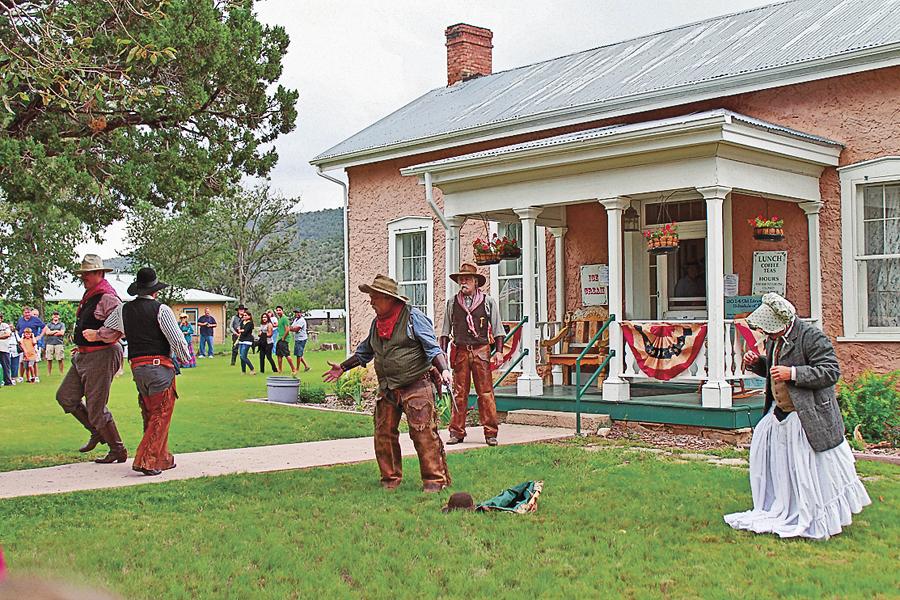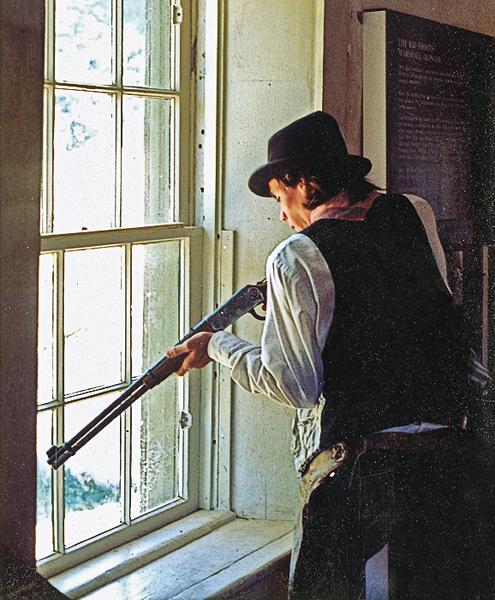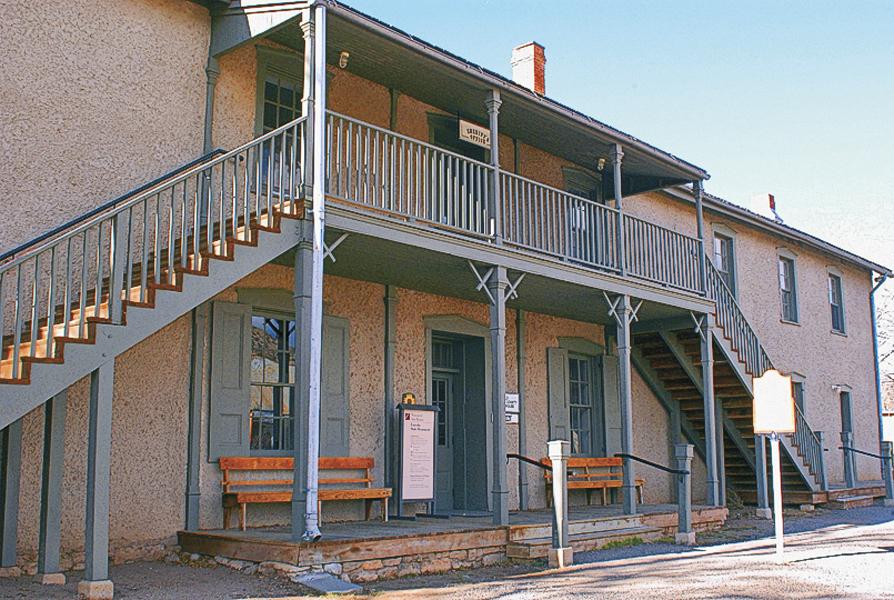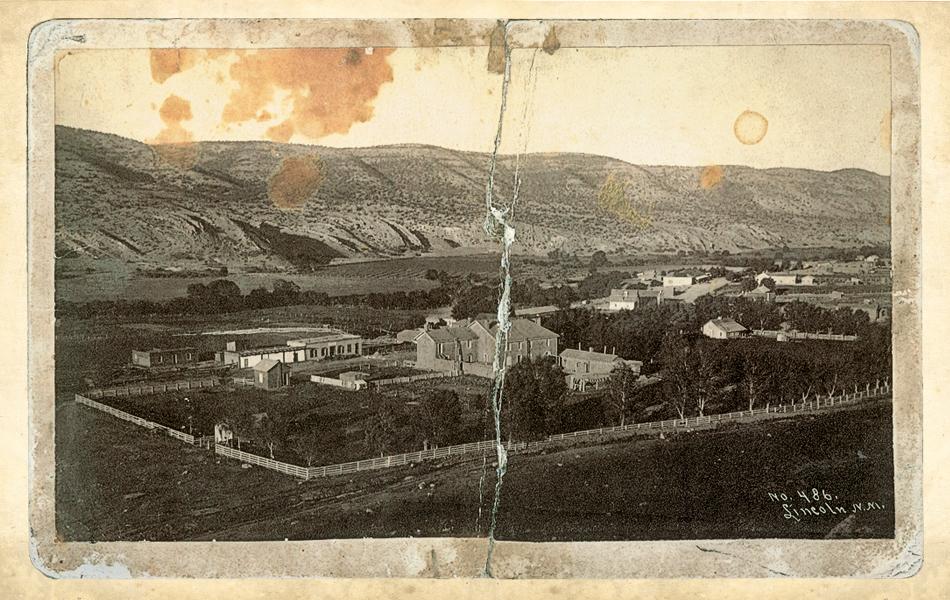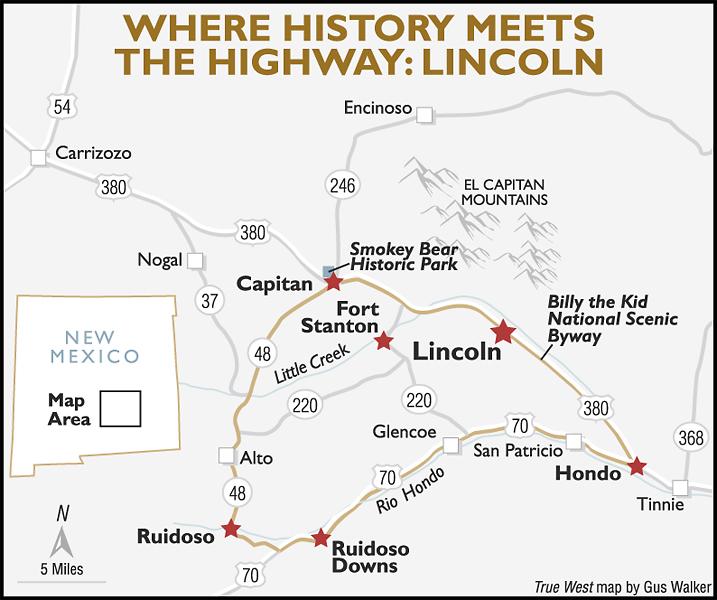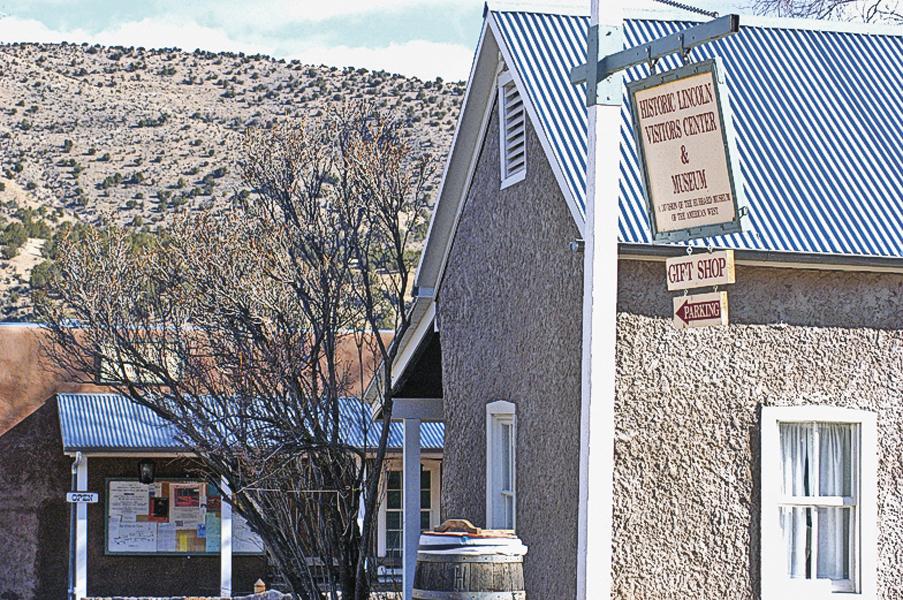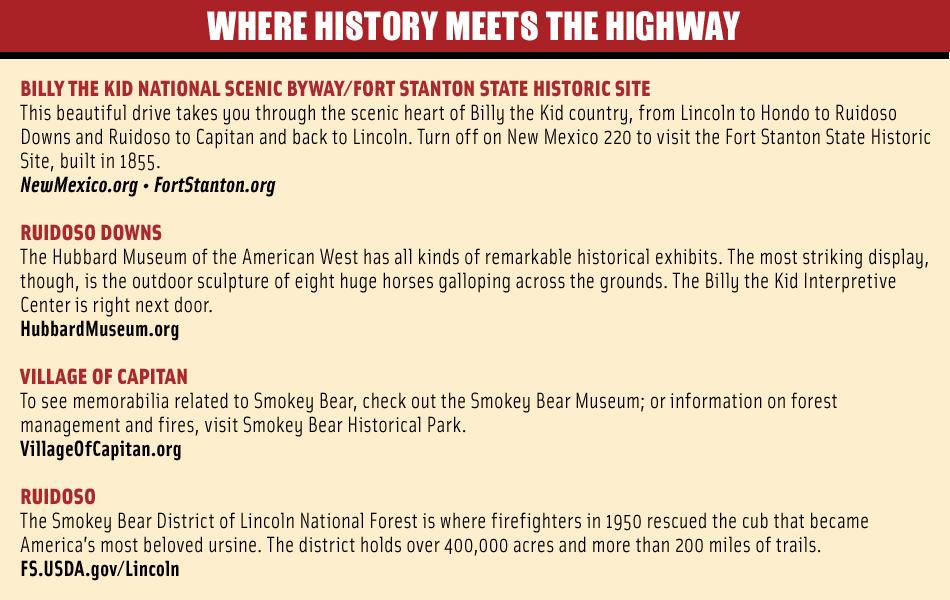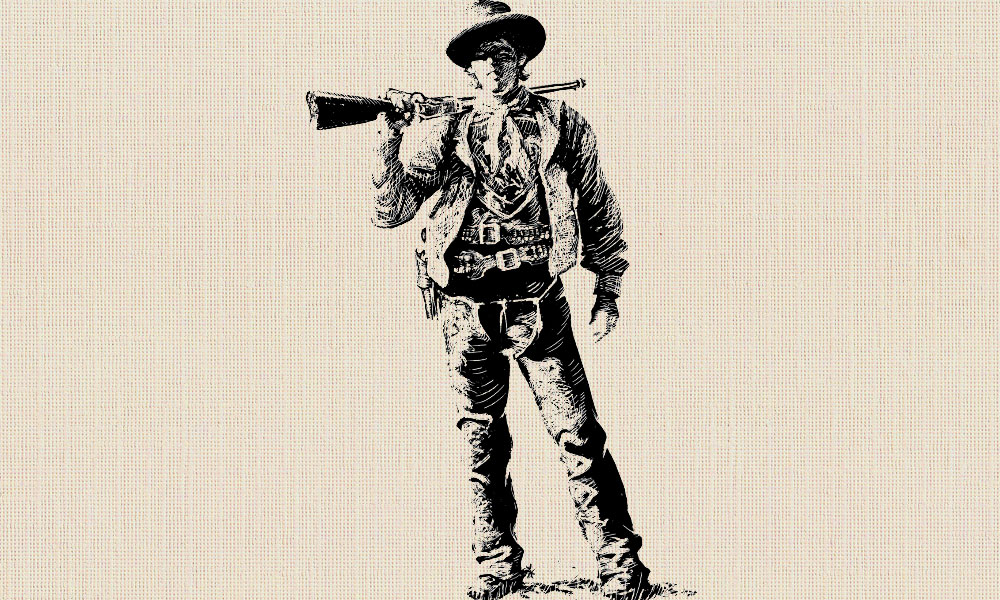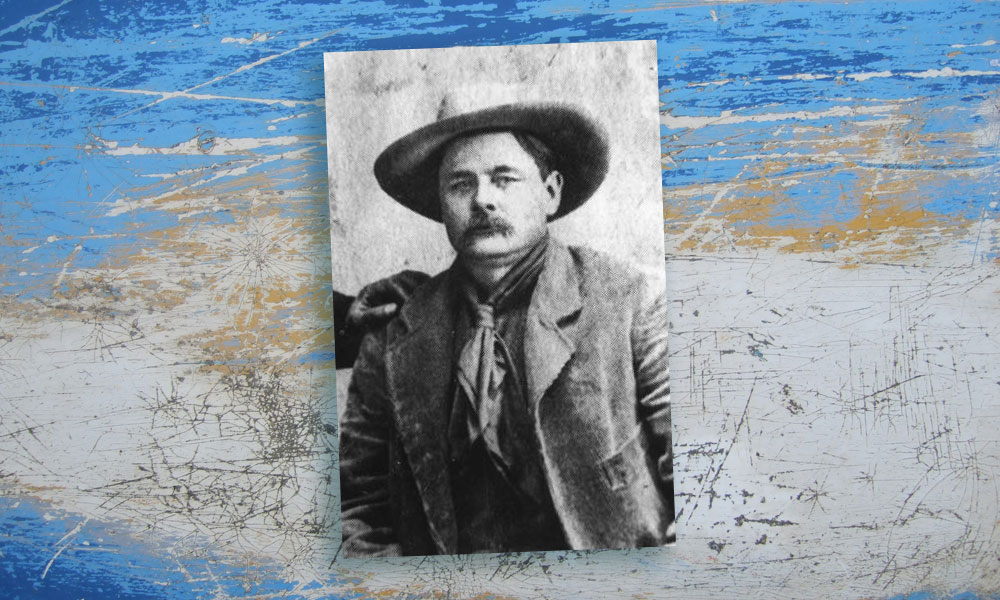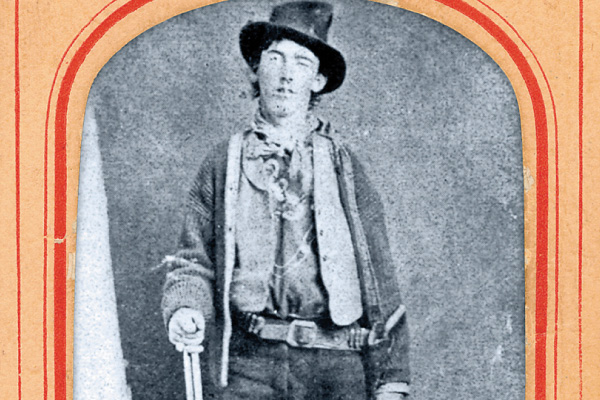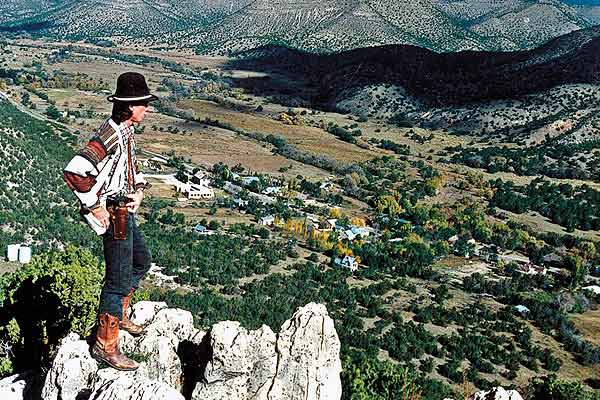 By most accounts, the death of 24-year-old John Tunstall was little more than a cold-blooded assassination.
By most accounts, the death of 24-year-old John Tunstall was little more than a cold-blooded assassination.
His murder was the spark that ignited the Lincoln County War, a conflict that got so bad that President Rutherford B. Hayes stepped in, ousting New Mexico’s corrupt territorial governor and replacing him with Lew Wallace, a former Civil War general, who spent his spare time writing his novel Ben-Hur.
Like most conflicts in the Old West, the Lincoln County War was about money and power. In the early 1870s, Lawrence Murphy and James Dolan owned the only store in Lincoln County—Murphy & Dolan Mercantile and Banking, aka “The House.” They also owned several large cattle ranches. And they were making money hand-over-fist.
That changed in 1877. “Tunstall built this huge store almost right across the street from the Murphy-Dolan Store,” says Lynda A. Sánchez, a writer, historian and preservationist who has lived in Lincoln for 40 years. “And that’s probably what sealed his fate.”
At stake was nothing less than the economic and political control of Lincoln County, at the time the largest county in the United States. At first there were insults and accusations, then threats and provocations. Dolan tried to goad Tunstall into a gunfight, but the Englishman refused to take the bait. He did, though, hire a young hand later known as Billy the Kid.
The long-simmering conflict erupted into gunfire on the evening of February 18, 1878, when a posse comprised of Dolan partisans murdered Tunstall on the road to Lincoln. And the war was on.
Once an uneasy peace had been restored to Lincoln, the new governor offered amnesty to all involved who were not yet under indictment. Billy, who had been charged for the murders of Sheriff William J. Brady and Deputy George W. Hindman, made his own offer, writing to Wallace: “I have no wish to fight anymore. Indeed I have not raised an arm since your proclamation.”
But Billy never got his pardon, so he fled Lincoln County and returned to his outlaw ways. On the evening of July 14, 1881, Lincoln County Sheriff Pat Garrett gunned down Billy at Pete Maxwell’s place in Fort Sumner.
Although Billy still draws visitors to Lincoln, it’s important to remember that the town’s history begins decades before the war, says Sánchez. Apaches lived in the area for ages. Hispanic settlers arrived in the fertile valley of the Rio Bonito in 1849 and named their community La Placita. That was changed to Lincoln about two decades later. The town served mainly as a supply center for nearby ranches and mines. Unlike boomtowns, Lincoln grew slowly. In 1888, its population
was just 800.
Nowadays around 40,000 visitors a year come to Lincoln, making it the most popular of New Mexico’s historic sites.
You’ll definitely want to check out the town’s many museums housed within historic buildings and operated jointly as the Lincoln Historic Site. But if you’re really pressed for time, don’t miss the courthouse, the Tunstall Store (which still displays genuine 19th-century merchandise on original shelving and cases) and the Torreón , the village’s defensive rock tower.
Sánchez credits the town’s zoning ordinances for preserving the historic atmosphere of Lincoln. “Today you can walk in the same buildings that Billy the Kid walked in, that John Tunstall
walked in. Lincoln is one of the premier historic communities in the West,” she says. And she’d like to keep it that way. “When I used to ride horses with my daughter out here we felt like we were coming into town to see Billy.”
WHERE HISTORY MEETS THE HIGHWAY
Lincoln Historic Site
There’s no better place to start your visit than the Lincoln Historic Site, including the Visitor Center (above), Old Lincoln County Courthouse and the Tunstall Store. LincolnCountyNM.org • NMMonuments.org
This beautiful drive takes you through the scenic heart of Billy the Kid country, from Lincoln to Hondo to Ruidoso Downs and Ruidoso to Capitan and back to Lincoln. Turn off on New Mexico 220 to visit the Fort Stanton State Historic Site, built in 1855. NewMexico.org • FortStanton.org
Ruidoso Downs
The Hubbard Museum of the American West has all kinds of remarkable historical exhibits. The most striking display, though, is the outdoor sculpture of eight huge horses galloping across the grounds. The Billy the Kid Interpretive Center is right next door. HubbardMuseum.org
Village of Capitan
To see memorabilia related to Smokey Bear, check out the Smokey Bear Museum; or information on forest management and fires, visit Smokey Bear Historical Park. VillageOfCapitan.org
Ruidoso
The Smokey Bear District of Lincoln National Forest is where firefighters in 1950 rescued the cub that became America’s most beloved ursine. The district holds over 400,000 acres and more than 200 miles of trails. FS.USDA.gov/Lincoln
John Stanley, the Arizona Wildlife Federation’s 2007 Conservation Media Champion, is a former travel reporter and photographer for The Arizona Republic.
Photo Gallery
– Courtesy Bob Boze Bell –
– by Nika Sundaram/Courtesy Lincoln Historic Site –
– Courtesy Bob Boze Bell –
– Courtesy New Mexico Tourism Department –
– Courtesy Robert G. McCubbin Collection –
There’s no better place to start your visit than the Lincoln Historic Site, including the Visitor Center (above), Old Lincoln County Courthouse and the Tunstall Store.
LincolnCountyNM.org NMMonuments.org


